“The trickster’s function is to break taboos, create mischief, stir things up. In the end, the trickster gives people what they really want, some sort of freedom.” – Tom Robbins

Detail from “Singing the Souls Back Home,” by Ruth Brockman
We love hearing from kids in middle school!
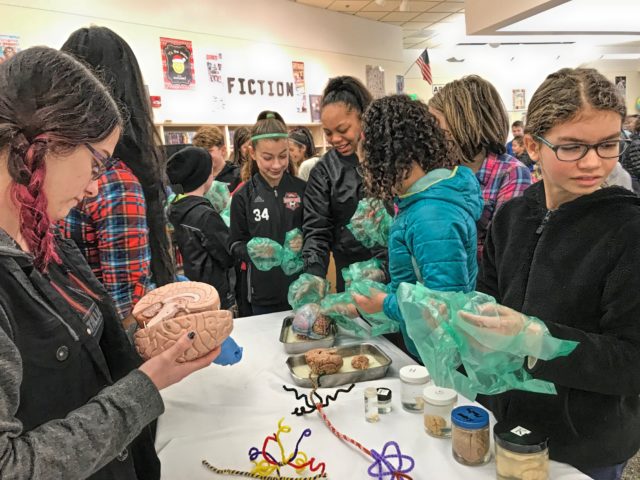
Sixth graders are experiencing major brain changes, discovering social rules and requirements through impulsive risk taking and felt consequences, and they often notice and appreciate aspects of the world that adults might not perceive or consider – and in some cases may even actively suppress…

LEARN MORE: NIH releases first dataset from study of adolescent brain development
LEARN MORE: Identity, Belief and Bias
Shahala Middle School is in Vancouver’s Evergreen Public School District, and is named after the Katlagakya people, called Shahala by Lewis & Clark, which translates to “above…”

Vancouver artist Ruth Brockman has filled the dazzling sky-lit Shahala Library with hovering glass images depicting the abundance of the Columbia River region – including a pretty compelling snapshot of a networked human brain!

LEARN MORE: Vancouver artist infuses Shahala Middle School with Northwest rivers and rhythms
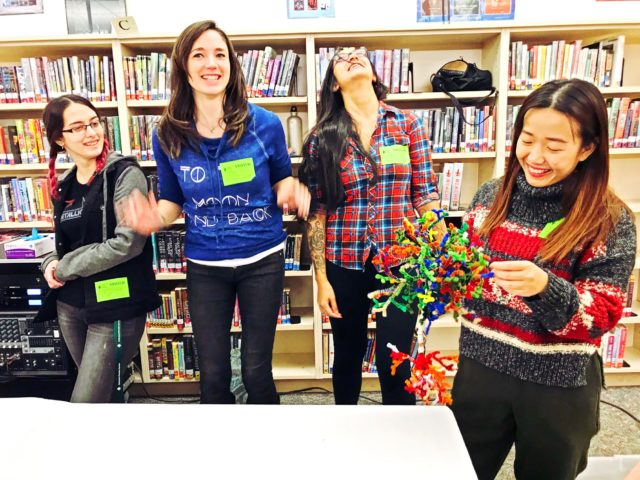
Today’s enthusiastic volunteers included an accomplished crew from Portland State University (happily letting knowledge serve TWO cities!): Jade Osilla, Austin Lewis, Ashley Keates, Krystal Nguyen and NIH BUILD EXITO participant McKenzie Figuracion…

Denesa Oberbeck from Bob Hitzemann’s Behavioral Neuroscience lab at OHSU also joined us with an astonishing assortment of donated animal brains, including ferret, pig, chicken, squirrel monkey and the cortically well-endowed raccoon!
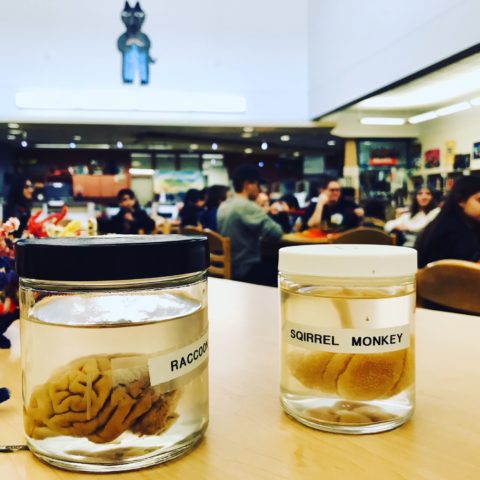

Raccoons are primate-like in their skilled paw (hand) movements; in fact, a 1907 paper by the ethologist H. B. Davis reported that these clever animals could open (trick?) the majority of complex locks they encountered and gain freedom. This is no secret to those in this abundant river region who raise sometimes vulnerable chickens in Northwest backyards…


The chicken brain…
Raccoons also have primate-like neuron density (dense – though not as dense as crow brains), with “dog like numbers of neurons in their cat-sized brain..(!)”

LEARN MORE: Dogs Have the Most Neurons, Though Not the Largest Brain
LEARN MORE: The brain of the raccoon (Procyon lotor)
LEARN MORE: How skilled are the skilled limb movements of the raccoon
LEARN MORE: The Raccoon: A Study in Animal Intelligence
LEARN MORE: In Defense of Raccoons
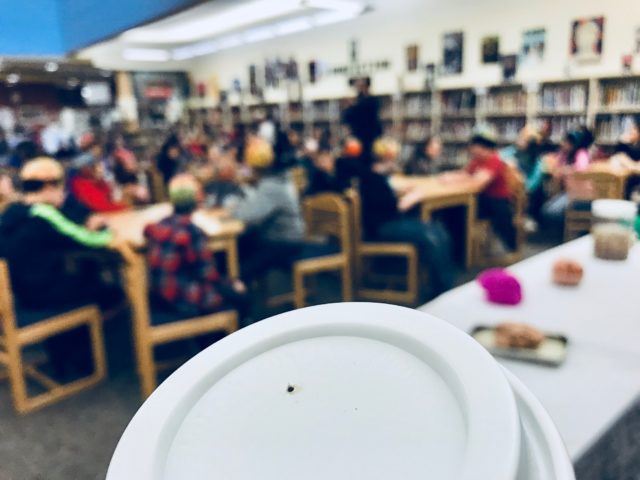
Around 120 Shahala students filed into the library, many wearing colorful brain caps constructed and illustrated in Cassie LeBlanc and Keith Johnson’s science classrooms in preparation for our visit..!

LEARN MORE: Brain Hemisphere Hat from Ellen McHenry
While we began early, these kids were soon attentively absorbing introductions from our student volunteers, who told them about their own interests in both neuroscience research and making art. We explained that parts of their brains were exceptionally plastic (changeable) at this moment, more so than adult brains whose developed networks of linked neurons channeled information along more established routes – jumping to conclusions, confirming biases, making assumptions, maintaining beliefs – and often missing important details that innovative young people might catch…
LEARN MORE: A role for synaptic plasticity in the adolescent development of executive function

We emphasized that their ideas are valuable, their felt experiences real. The risks they take and mistakes they make (along with everyone else) are a normal and important part of how all brains develop, and grow…

Learning from error, and changing behavior, is how we progress. The inspiring young people at Florida’s Marjory Stoneman Douglas High School, now eloquently pointing out the clear link between lax gun laws and horrific gun violence, were definitely on our minds, and are acting in striking and hopeful contrast to the resigned, perseverating adults who refuse to change policy, responding instead with more of their devastatingly ineffective thoughts and prayers…
LEARN MORE: Saving lives by regulating guns: Evidence for policy
LEARN MORE: Funding and Publication of Research on Gun Violence and Other Leading Causes of Death
LEARN MORE: NIH institute directors stand firm on not renewing focused firearm research program
LEARN MORE: Thoughts and Prayers and NRA Funding


But change happens. And young brains can help drive effective change…
“Come senators, congressmen, Please heed the call
Don’t stand in the doorway, Don’t block up the hall
For he that gets hurt, Will be he who has stalled
There’s a battle outside ragin’.
It’ll soon shake your windows, And rattle your walls
For the times they are a-changin’.”
–Bob Dylan
LEARN MORE: Race, Bias & Brain
LEARN MORE: Reclaiming Identity @ Portland Art Museum
LEARN MORE: Beyond stereotypes of adolescent risk taking – Placing the adolescent brain in developmental context
These eager students had many questions..! “Where do dreams, and nightmares, come from? How do cigarettes change your brain? What part of the brain do we use the least? Is there diversity in brains? Why aren’t the rules we’re supposed to follow the same for everyone? Why can that person get away with something that gets me in trouble…“

LEARN MORE: A Molecular Basis for Nicotine as a Gateway Drug
LEARN MORE: Nicotine and Tobacco as Substances of Abuse in Children and Adolescents

We get questions from 6th graders that rival those from graduate students in depth, relevance and complexity – and we encourage these sharp young people to keep asking more. We also introduce them to undergraduates and graduates pursuing similar questions right here in their own community…

And yes, for example, there is abundant evidence for diversity in brains, given our unique genetic inheritance, and the way our neural networks wire up depending on our own life experiences…
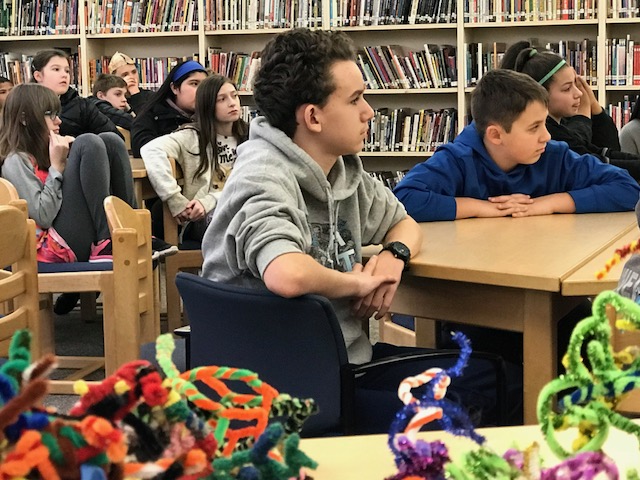
LEARN MORE: Noggin joins Reclaiming Identity @ Portland Art Museum
Our temporal lobes, for example, where visual details (color, form) are channeled, allow us to identify what various objects are (this assemblage of synaptically linked brain cell networks is called the “what pathway”). Yet the specific objects we recognize, including faces, depend on actual visual encounters. In fact, the faces in your community help define the biases you express, and more interaction with others helps expand our brains’ appreciation for more of us in our shared community…

LEARN MORE: The ventral visual pathway
LEARN MORE: How social experience is related to children’s intergroup attitudes
LEARN MORE: Landscapes of the Brain – Seeing us all through research & art
And if, for example, you love bicycles (and several students did), you can recognize and identify the many different parts of bikes you’ve ridden, and examined, while someone fascinated by Pokemon might have more temporal regions dedicated to distinguishing a Bulbasaur from a Furret!

The brain (and spinal cord!) of a ferret – not a Furret
(of course, from experience, many of our volunteers now see brain cells in everything… 


“What got you interested in studying brains..?”
Our volunteers love this question!

From PSU undergraduate Ashley Keates: “I got interested in studying the brain after working for a neurologist as a therapist. I got to see people with traumatic brain injuries get better and that was really inspiring to see and be a part of. I find neuroscience incredibly interesting and I love how much there still is left to be discovered.”
From Jade Osilla, also at PSU: “Like my groupmates, I was interested in who we are. Why do some like hockey and others like basketball? Why can someone be great at playing the piano… while someone else isn’t good at singing – no matter how hard they try?! I wanted to know what makes people different from each other, and how environment and biological factors influence the brain.”
From Krystal Nguyen, another service-oriented Viking volunteer: “My favorite classes in college always involve neuroscience and neurophysiology. I’m personally interested in Alzheimer’s and the endocrine system. It was a profound memory the first time I gazed at a real human brain in my hands during anatomy lab. I thought to myself: ‘Such a compact size for something that holds so much power and complexity.’ It was truly fascinating to think this small delicate clump of billions of cells in my hands is ultimately what makes a person a person, something this small has the entire capacity to store a lifetime of knowledge, emotion and memories… and the power to erase them.”


After questions, we made art! Shahala students clearly relished crafting their own brain cells under the mischievous gaze of Ruth Brockman’s Coyote – and everyone hugely appreciates the low cost and abundant availability of colorful pipe cleaners…
LEARN MORE: NW Noggin STEAM Art Projects

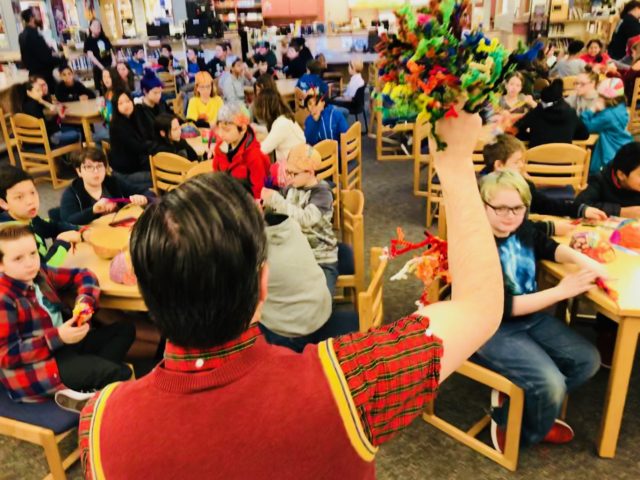
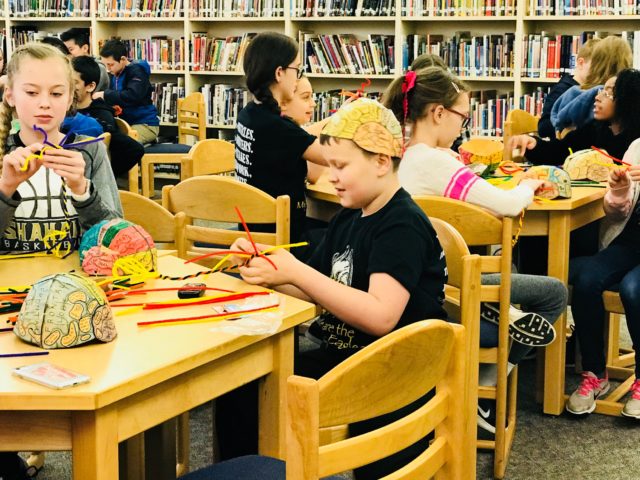



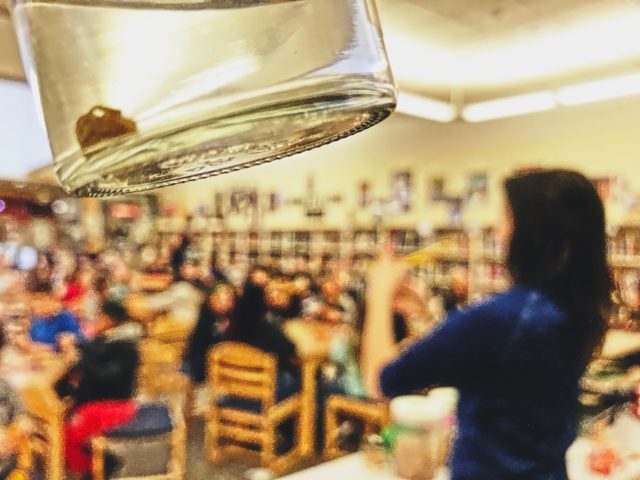

The students at Shahala also seemed at least mildly interested in…BRAINS!



There are many bilingual and multilingual students at Shahala, and we enjoyed practicing neuroscience-related terms in several languages. Brain is мозг (“mozg”) in Russian, Gehirn (“ger-hurn”) in German, мозак (“mozak”) in Serbian, el cerebro in Spanish, óc (“ock”) in Vietnamese, cervello in Italian, miya in Uzbek…






Shahala Librarian Paul Warner…is (perhaps) a bit of a trickster!
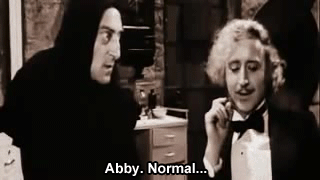
LEARN MORE: Young Frankenstein
LEARN MORE: Shahala Library






Over the course of the morning, we met with more students (around 400 in all!), answering questions, making art and exploring neuroanatomy. Many thanks to Shahala teachers and staff for welcoming us back to school. We are inspired by the plasticity and potential of a new generation of smart young people fascinated by big ideas, and the promise of more research, innovation and art!
LEARN MORE: Synapses @ Shahala!

LEARN MORE: Shahala Synesthesia!

LEARN MORE: Are brains edible?



